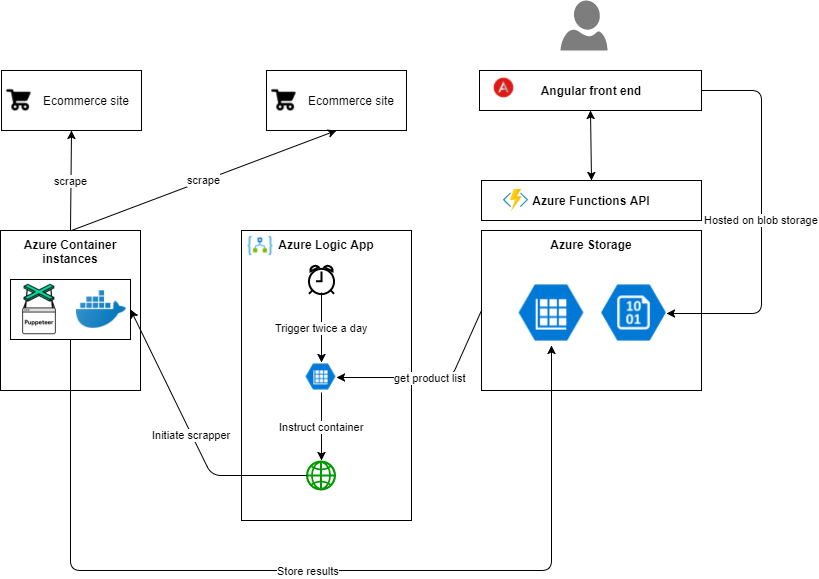
- #Espn webscraper for nodejs how to
- #Espn webscraper for nodejs install
- #Espn webscraper for nodejs manual
- #Espn webscraper for nodejs code
- #Espn webscraper for nodejs free
#Espn webscraper for nodejs install
You can follow this guide to install Node.js on macOS or Ubuntu 18.04, or you can follow this guide to install Node.js on Ubuntu 18.04 using a PPA. This tutorial was tested on Node.js version 12.18.3 and npm version 6.14.6.
#Espn webscraper for nodejs code
First, you will code your app to open Chromium and load a special website designed as a web-scraping sandbox:. Your app will grow in complexity as you progress. In this tutorial, you will build a web scraping application using Node.js and Puppeteer. Scraping is also a solution when data collection is desired or needed but the website does not provide an API.


#Espn webscraper for nodejs manual
Primarily, it makes data collection much faster by eliminating the manual data-gathering process. There are many reasons why you might want to scrape data. The process typically deploys a “crawler” that automatically surfs the web and scrapes data from selected pages. Web scraping is the process of automating data collection from the web.
#Espn webscraper for nodejs free
execFileSync() respectively.The author selected the Free and Open Source Fund to receive a donation as part of the Write for DOnations program. execFile() do have their synchronous blocking versions that will wait until the child process exits namely. child_process.fork(): The fork function spawns a new Node.js process and invokes a specified module with an IPC communication channel established that allows sending messages between parent and child.child_process.execFile(): The execFile function is similar to child_process.exec() except that it spawns the command directly without first spawning a shell by default.It's the most generic spawning function and all other functions are built over it. child_process.spawn(): The spawn function launches a command in a new process and you can use it to pass that command any arguments.There are other very useful spawning functions like. Only a set maximum size of data can be buffered.Buffering the entire data into memory will affect the process performance.Example ls -al | grep '^package' will show the list of all the sub-directories in the current directory that begin with the word 'package'. You can pipe the output of one command as the input to another (just like you could in Linux).

It is not necessary here - the process will still exit and the error code will still be shown on errors.īuffering the Output means that the output of the command is loaded into the memory before sending to stdout or stderr and as mentioned above a default of 200KB can be buffered into the memory. In the example above, since we are using ls, a program that will exit immediately regardless, the only part of the ChildProcess object worth worrying about is the on exit handler. While child_process.exec buffers the output of the child process for you, it also returns a ChildProcess object, which wraps a still-running process. As such, when trying to work with a program that you have not previously spawned as a child process, it can be helpful to start out dumping both stdout and stderr, as shown above, to avoid any surprises. Many programs use it as a channel for secondary data instead. The stderr of a given process is not exclusively reserved for error messages. Take a look at an example: const ) Įrror.stack is a stack trace to the point that the Error object was created.

On Windows, you need to switch these commands with their Windows alternatives. The examples you will see in this article are all Linux-based. It runs your process, buffers its output (up to a default maximum of 200kb), and lets you access it from a callback when it is finished. The simplest way is the "fire, forget, and buffer" method using child_process.exec. If you find yourself wishing you could have your Node.js process start another program for you, then look no further than the child_process module.
#Espn webscraper for nodejs how to
How to spawn a child process - the basics


 0 kommentar(er)
0 kommentar(er)
